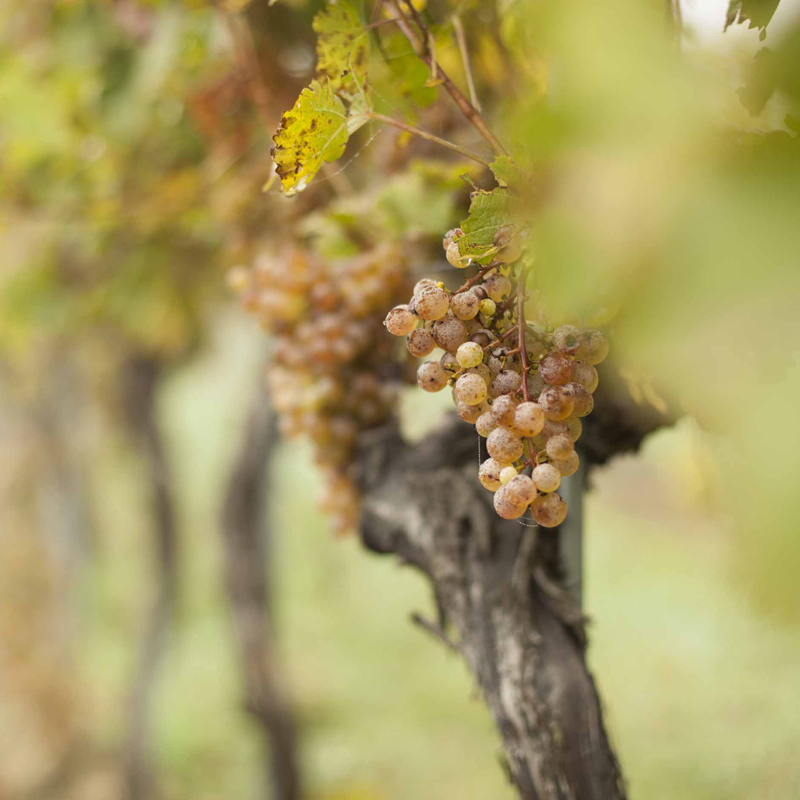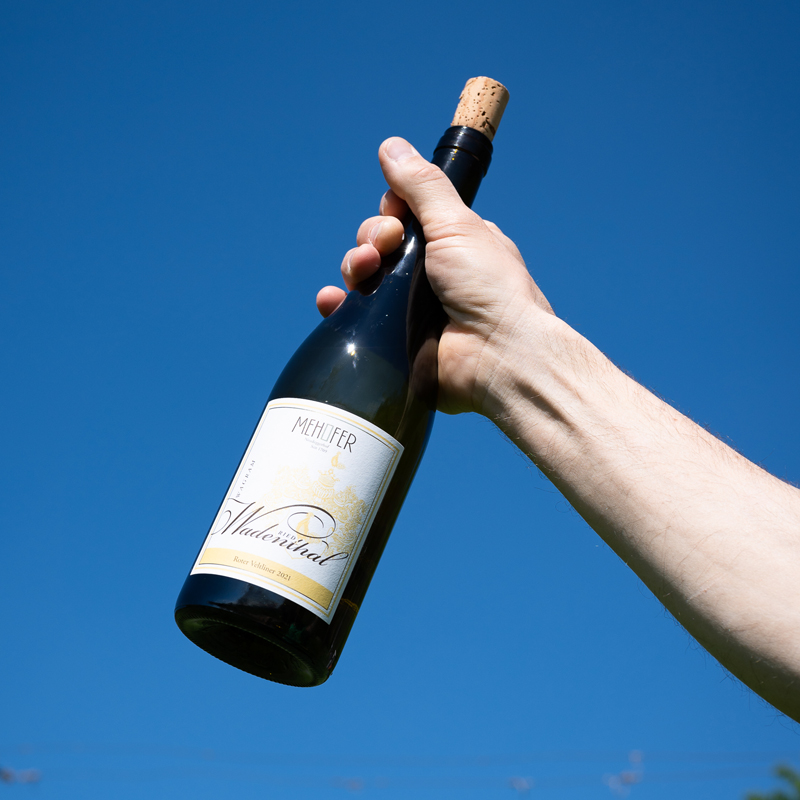300 Years Neudeggerhof . 30 years organic wine. Winemaker’s comment
Roter Veltliner
A declaration of love.
Roter Veltliner is among the oldest Austrian grape varieties. With not even 1% of the Austrian vineyard area, it is an absolute rarity. I remember that our grandma told stories about Roter Veltliner and how more than 70 years ago it was the main variety here. I’m proud that other local winemakers and I contribute to continue this tradition.
Roter Veltliner is in the spotlight again.
Worth to protect. Our mission and those of our winegrowing colleagues is clear: We prepare Roter Veltliner for the future! Hence, we select and clone particularly vital vines. This will make the variety even more independent of weather influences, climate change and the intervention of the winemakers. In addition, the selection process in each winery promotes many different,very individual clones that enhance unique characters and individual personalities. This will allow even more knowledge to be collected, shared and passed on to the next generation. Another advantage of this intraspecific diversity lies in the long-term protection of the vines with regards to future challenges.
Delicious! Roter Veltliner tends to produce wines rich in extracts, which have a good acid structure when grown in the right location and handled with care. Typical aromas range from juicy pear, to apple, honeydew melon, almond, and orange zest.. When the grapes are harvested highly ripe, baked apple, tropical fruits as well as fresh blossom honey can be tasted.



From vineyard to cellar
In it’s youth, Roter Veltliner vines tend to grow very vigorously. Although the vigorous grow decreases with age, it is important to handle Roter Veltliner with care just from the beginning: To promote balancit is not only important to chose the right location but also to consider the most suitable soil management, in the form of thoughtful seeding. In addition, we reduce yields by splitting grapes in early summer. Thanks to increasingly mindful care of the Roter Veltliner vines, their genetic material improved significantly towards small-berried grapes with high quality and lower growth.
In the cellar, the Roter Veltliner grapes are always fermented with our own vintage yeasts and, depending on their origin – Wagramer Regionswein, Neudegger Ortswein or Ried Wadenthal – stored in stainless steel tanks or 1000 l wooden barrels. Roter Veltliner is a grateful companion, because it rewards our care in the vineyard year after year with distinctive character. Some surprises are waiting in 30-year-old wines!
Enjoy Roter Veltliner at home:
Data and Facts about Roter Veltliner
- Origin: Northern Italy. Distribution of the variety in the Danube region goes back to the Romans, often the Caucasus is also mentioned as origin.
- Synonyms: e.g. Rote Fleischtraube, Rotreifler, Rotmuskateller, Piros Veltelini
- Ancestor of: Rotgipfler, Zierfandler, Neuburger, Frühroter Veltliner
- Characteristics:
Shoot tip: copper-coloured to reddish
Shoots: medium strong and long
Leaf: dark green, upper side is smooth, underside is medium hairy
Grape: medium to large size, dense berry, the basic grape is conical with one to three wings, the accession is small or missing
Berries: greenish-yellow to flesh-red in colour, thick-skinned, unevenly ripening - Vegetation:
Flowering: from mid-June
Beginning of grape ripening: from mid-August, aroma develops, acidity is reduced, at the same time sensitivity to Peronospora decreases
Harvest time: depending on the weather, between mid and late October. Roter Veltliner is ripe when the berries are dark pink in colour and the aroma is ripe – regardless of the sugar gradation. In difficult years, multiple selective harvesting is necessary. Due to its late harvest, Roter Veltliner is called the diva of the vineyards, it takes patience and dedication to wait for the right ripeness. - Sensory: Roter Veltliner tends to produce wines rich in extracts, which have a good acid structure when grown in the right location and with the same care. When young, the typical aroma spectrum of Roter Veltliner ranges from juicy pear apple to honeydew melon, almondand orange zest.. When the grapes are harvested highly ripe, baked apple, tropical fruits as well as fresh blossom honey can be tasted.


